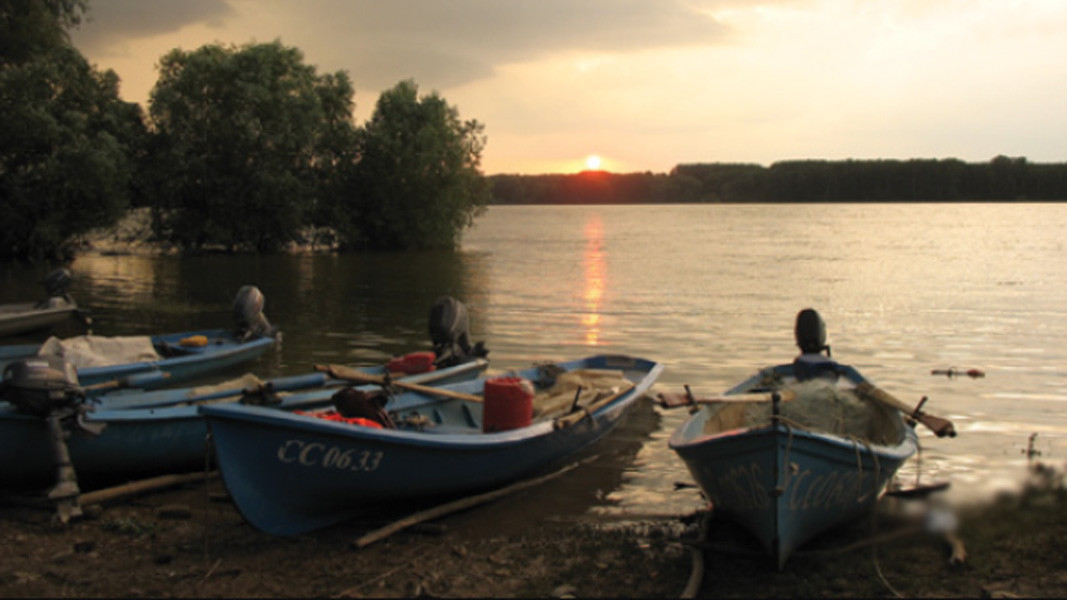“For Bulgarians, the Danube has always had more to do with the heart than the mind. Conquerors, revolutionaries, merchants, emigrants have all sailed in its waters… There is so much to rediscover in Danubian Bulgaria… We set out from Vidin, via Oryahovo, Svishtov and Ruse, to reach Tutrakan and Silistra. We made stopovers in places connected with the great river for centuries – Belogradchik, Chiprovtsi, Vratsa, Lovech, Pavlikeni, Razgrad. We met Banat Bulgarians, Wallachians, Turlaks, Kapantsi, Alevis. We kayaked down to the sandy islands of the Danube to watch the pelicans and the white-tailed eagles. The Danube is for the free spirited!”
This is the message conveyed by the authors of the travel book “From the Balkan Mountain to the Danube. Danubian Bulgaria – travel ideas.”Vesela Nikolaeva, Gavril Gavrilov, Mihail Mihov are young people with varied professional interests and one idea in common – to popularize the beautiful sites and landmarks in Northern Bulgaria. Their book provides interesting facts from the Thracian and Roman legacy in the area, highlighting protected territories and biodiversity, and especially – food and wine in the Danubian part of Bulgaria.
“From the Balkan Mountain to the Danube. Danubian Bulgaria – travel ideas” offers a wealth of colour photographs with intriguing facts about each of the regions, including natural resources and biodiversity, the vines grown, the cuisine, the traditions, as well as advice – which season to choose for each of the natural landmarks.

“People often compare landmarks along the lower and the upper reaches of the Danube. In the upper parts of the Danube are the countries, whose capitals are located above the river, facing it. Unlike them, here in the lower parts, there are few towns or villages, there is mostly pristine nature, with the typical sand islands and river beaches, a virgin world that cannot be seen from the river bank, you have to travel along the river to come in contact with it,” says Mihail Mihov.
“It is an international river, and being a travel guide myself, I have been endevouring to popularize the region around the town where I was born, Ruse. I have tried to present the untamed side of the River Danube. The Danube region is the part of the country with the least number of people working in the tourist industry. There aren’t many professionals or enthusiasts working to construct or to popularize new itineraries in Northern Bulgaria. The places I love best are the Rusenski Lom Nature Park, the Danube River itself. Kayaking down the rivers Lom and Danube, seeing the Danube islands, watching wild birds is also something well worth the effort. There are a great many photographs in the book from Belogradchik and the environs, among them the caves Venetsa and Magura. Venetsa is a really beautiful cave, very well preserved.”

 “I have lived in a village in the centre of Northern Bulgaria, close to the Danube, half of my family come from Svishtov and the environs. I insisted that we include Northwestern Bulgaria in our book – I have been working with the website “Severozapazena (Northwest-Preserved) Bulgaria” for years, and there we provide information about this part of the country few know much about. And each one of us – authors had the task of describing the places we know and love best. That was how the book came into being,” says journalist Vesela Nikolaeva about “From the Balkan Mountain to the Danube. Travel ideas.”
“I have lived in a village in the centre of Northern Bulgaria, close to the Danube, half of my family come from Svishtov and the environs. I insisted that we include Northwestern Bulgaria in our book – I have been working with the website “Severozapazena (Northwest-Preserved) Bulgaria” for years, and there we provide information about this part of the country few know much about. And each one of us – authors had the task of describing the places we know and love best. That was how the book came into being,” says journalist Vesela Nikolaeva about “From the Balkan Mountain to the Danube. Travel ideas.”
“One of the big problems the region around the Danube has is depopulation. The depopulation rate there is overwhelming. The reasons are mostly economic. I think that if people believe in themselves more, there will be other enthusiasts and more new settlers. We are not trying to get people to return to the places where they were born, what we are trying to do is to give examples from the history of the Danubian part of Bulgaria and the regions we describe, so as to demonstrate that mostly due to the trade along the river, and their rich culture, these lands have attracted many people from Bulgaria and from other parts of Europe, who have chosen to go and settle there.”
English version: Milena DaynovaAs in 2024, this season's vacancies in the tourism industry will be filled by workers from third countries . According to employers from the Northern Black Seacoast, entire Turkish teams are employed in the kitchens of Albena resort. Workers from..
The first tourists of the new tourist season arrive today on a flight from the Polish city of Krakow. At Burgas Airport, they will be welcomed with a water salute and souvenir gifts in the presence of the Minister of Tourism Miroslav Borsos and the..
Intense preparations are underway on the Southern Black Sea coast for the upcoming summer season. The first tourists are expected for Easter, and businesses are actively seeking thousands of workers, reports public service broadcaster BNT. The..
As in 2024, this season's vacancies in the tourism industry will be filled by workers from third countries . According to employers from the Northern..

+359 2 9336 661
